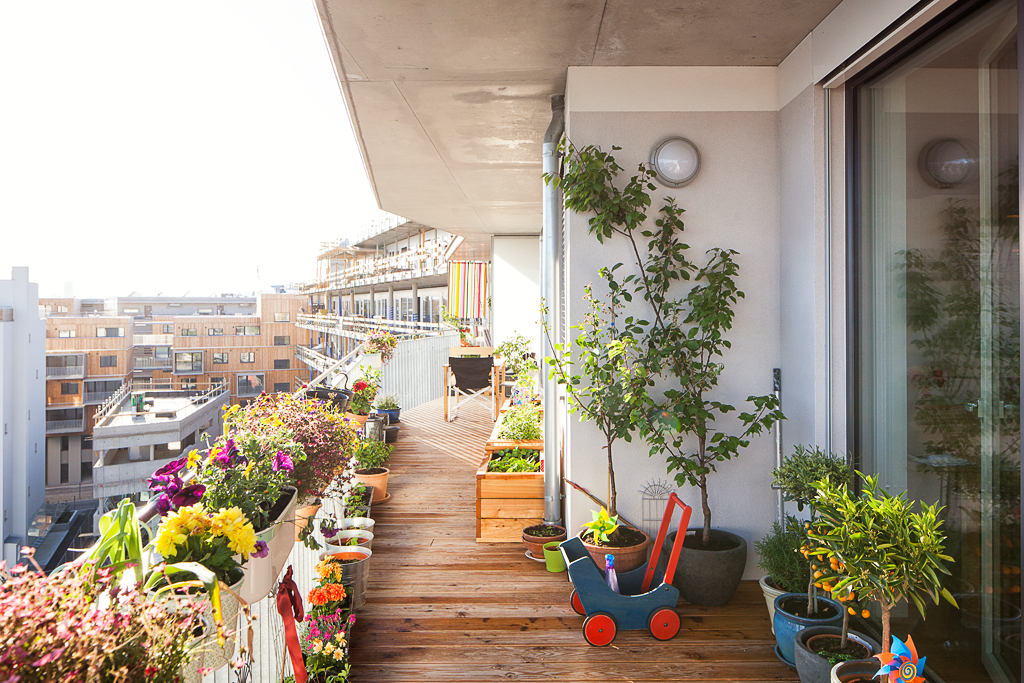Co-living: what’s it all about and will it take off in Melbourne?
We’re all searching for a place to call home. But in 2020, has our idea of the ‘perfect’ place to call home changed?
As housing prices rise and competition for well-located and affordable homes increase, it’s no wonder that some are seeking out new options. And, with 2020 being such a memorable year, many are looking for new ways to find connection and belonging, especially in where they choose to reside. Enter co-living.
First things first: what is co-living?
Put simply: co-living is when a group of people cohabitates together. Each home consists of various private and shared spaces. Typically, each resident has their own bedroom, studio or apartment, and the complex provides shared amenities like kitchens, living rooms, gardens, and in some cases, a gym, event spaces and more.
Most co-living spaces are designed with human interaction front and centre, building communal spaces that offer greater opportunity for connection. Many also offer regular events as a way of trying out new activities and meeting like-minded folk.
This has been popular for years in student accommodation, travel and backpacker accommodation and even for employees who live/work on cruise ships or large off site barracks.

Jaspern, Co-housing apartments in Vienna. Photo by Hertha Hurnaus. https://www.hurnaus.com/
And, why has it suddenly become so appealing?
If COVID-19 has taught us anything, it’s that we really value our social connections. Without these supportive relationships, studies have found that our feelings of isolation and stress increase.
With many people living alone, or in the outskirts of a city where they have little access to social networks or opportunities for interaction, alternative living offers an opportunity to be part of a community.
Our ‘housemates’ or ‘neighbours’ have the potential to become our friends, family, co-workers and our community. People we can rely on, reach out for a chat, and at best, form genuine friendships with.

Co-living can be great for social connection. Photo by fauxels from Pexels
How has it taken off? And, is it just a fleeting generational trend?
Globally, with urbanisation rapidly increasing, many countries have seen spikes in demand for co-living. In China, it’s become a particularly popular option for millennials. Since it offers a solution to the lack of accessible and affordable housing in metro areas. Like China, the US has also seen co-living take off.
Being renowned for one of the most expensive places to rent in the US, New York, has seen good uptake for co-living. Especially since young people in the city are seeking out ways to make connections both professionally and personally.
Sharing living spaces in a way that facilitates interaction helps give these young professionals a sense of place in the big city. Plus, we know that looking for an apartment to rent can be incredibly stressful.
Co-living can be a much easier option when compared to months of apartment hunting. And, with so many people shifting to freelance and/or remote work, the speed and accessibility of co-living is an easier way to meet like-minded people and find a place to live.
It would be inaccurate to assume that co-living is only popular with young people though. We know that the gap between generations is ever-growing, especially as technology advances and attitudes progress.
But what if a shared space could help resolve this? The Generation Block in Finland is just one example of a space designed for all age groups, where residents are united by shared interests and values, rather than age. This kind of setup is a great step in the right direction of bridging the gap between generations.
It would be amiss not to include COVID in this conversation, which could be the unlikely catalyst that moves co-living from fleeting trend to living mainstay.
In reactive analysis, co-living seems problematic during the pandemic as high density living can lead to faster transmission. However, as we come to terms with “COVID normal” we realise that this type of living can keep people connected, informed and instil them with a greater sense of community to provide very much needed emotional and social support.

Open House Central Embassy, Bangkok, Thailand – a trendy modern contemporary green and living space. Photo by KiraKiraAng on Shutterstock
Can it be better than our traditional living arrangements?
Co-living can offer many benefits for those seeking a change from the traditional way of living. But is it for everyone?
Let’s take a closer look at the pros and cons of co-living and see how it weighs up.
Pro: Better for our wellbeing
We all know that connection and support is fundamental to our wellbeing. Since co-living spaces are designed for interactions, offer shared responsibility, and in some places, require residents’ input, those living there can feel part of a community.
Con: Lack of privacy (in some cases)
Living in close quarters can be challenging when it comes to privacy. Residents will have their own room, or even their own studio or apartment. But with shared spaces and responsibility at the core of co-living, residents will need to be used to seeing people around and sharing common areas.
Pro: More for your money
Not all co-living spaces are cheaper than renting. But, one thing is for certain, you tend to get a lot more for your money. As mentioned above, many of these co-living spaces offer gyms, weekly professional and social events, communal gardens, etc.
Con: Little room for personalisation
Although some spaces are set up for residents to design the space with their own style, many co-living arrangements come fully furnished. For people who would prefer to style or furnish their own homes, co-living may not be the best option.
Pro: Flexible options
For those who’ve just moved to a new city or are in between jobs, co-living can be a great interim option. One of the best things about it is that it can offer a flexible solution. Many spaces will let residents stay for a 6month, or 1 year period. For those who prefer some stability, the amount of residents coming and going, it could become a little unsettling though.
Con: Too many people
One survey carried out by One Shared House 2030 found that many people wish to live in a shared household with a maximum of 10 residents. Whereas many big co-living apartments are designed for a much larger capacity. Someone who prefers to socialise in smaller groups may find the modern co-living spaces a little overwhelming.

The view from shared balcony at Jaspern, co-housing apartments in Vienna. Photo by Pos arch, CC BY-SA 4.0.
Co-living: What’s It All About and Will It Take Off in Melbourne?
Co-living, an innovative housing model combining private living spaces with communal areas, is gaining popularity worldwide. Particularly appealing to young professionals and those seeking community, co-living fosters social connections while offering affordable living options. With its focus on shared experiences, this model aligns with modern urban lifestyles and has found success in cities like New York, London, and Shanghai.
In Melbourne, where housing affordability is a growing concern, co-living could be a solution to bridge the gap between high rent prices and the need for a sense of community. Shared living spaces encourage interaction while keeping costs manageable—a win-win for many city dwellers.
For those embracing co-living’s affordability mindset, finding leisure activities that offer great value is equally important. If you’re seeking entertainment on a budget, 15 dollar online casino options provide thrilling experiences without breaking the bank. At https://australiacasinohub.com/casinos/15-dollars-minimum-deposit, you can discover reputable casinos offering a $15 minimum deposit. These platforms provide a safe and exciting way to enjoy online gaming, featuring games like pokies, roulette, and blackjack.
As co-living grows in Melbourne, the appeal of affordable experiences—whether in housing or entertainment—continues to resonate with urban lifestyles.
Is it better for Melbourne and will it work?
There’s no denying that many Melbourne residents struggle to find an affordable property, with a good amount of space and within the inner suburbs.
The struggle is twofold. Those who want to be close to their favourite pubs, restaurants and the CBD are left with no option but to downsize and/or pay more. Whereas those who value square meterage over location, are pushed out to the suburbs or regional areas.
It’s meant that many Melburnians are left weighing up their options. And, co-living has become a solid solution for some.
Co-living offers this generation an opportunity to stay in the city and as a result, Melbourne’s notorious food, culture and music scene can continue to grow. What’s more, these arrangements could draw in regional dwellers looking for a taste of the city life.
Saying that, Australia and New Zealand have been slower on the uptake than other countries when it comes to developing co-living properties. This mainly boils down to a nonexistent build to rent sector due to an array of tax hurdles. Meaning, we may have to wait a little longer to see new co-living properties pop up across the city.
Perhaps in the wake of COVID, we can challenge the status quo of living and help people to find a new community that supports and fosters their wellbeing.
Cover image by Weave Living.
Check out Can architecture play a part in improving mental health?
Words by Lorna Whitton for blueprint





